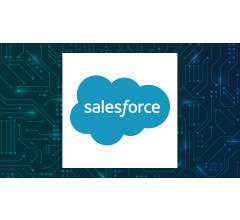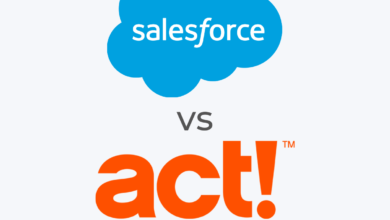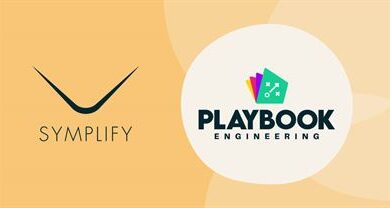Why We Need To Get Rid of the ‘Contact Sales’ Button!

Kate McCullough, co-founder and chief GTM officer of Nue, unveils how this feature severely hampers SaaS businesses’ ability to track the journey of customers and potential leads, consequently complicating efforts to acquire, retain, and upsell customers.
It’s an unfortunate feature of every pricing page. You know exactly what you’re being offered with a basic or pro package, but when shopping for a more complex plan, a larger company, or higher usage, you need to turn to Enterprise. All of a sudden, secrecy takes over, and you’re directed to “Contact sales.”
The Contact sales button introduces a bottleneck for buyers where it doesn’t need to – but the problem runs even deeper. It is crippling businesses’ visibility into the journey of customers and potential leads, which in turn makes it harder to gain, retain, and upsell customers.
With B2B customer acquisition becoming more challenging, today’s SaaS companies strive for greater customer retention and higher LTV. To do so, they need to increase their visibility of the customer journey, which can’t happen if walls remain between self-service—product-led growth—and sales-led processes. Step one is to make pricing more agile and accessible to the consumer and eliminate the Contact sales button once and for all.
This is how businesses can go about doing so.
Recognize the Bilateral Demand for Self-Service
We’re seeing a growing desire from customers and sales reps to have a self-service-enabled buying journey. The 2024 Sales Trends Report by Hubspot found that 64% of B2B salespeople offer their buyers self-service tools like product demos, chatbots, and free trials – and 85% reported that they were effective.
On one hand, this facilitates customer acquisition by giving customers more autonomy in making informed decisions. But this also empowers sales reps. The same report found that salespeople who put forward self-service tools are 47% more likely to outperform their goals than their peers.
By offering buyers self-service tools, sales reps can facilitate customers’ needs along their journey without interrupting them or meddling, which can lead to more good-fit leads closing the deal or approaching them further down the pipeline.
There’s no reason enterprise SaaS sales can’t look more like an Amazon checkout. Even your largest buyers should be able to pick and choose what they want from your services; what’s important is that your team put educational material in front of them at the right time and be easily accessible if they need human advice.
Hubpsot’s pricing page offers a good starting point. Although you ultimately still have to speak to a sales rep, the page gives transparency on price and a price calculator, even for bigger accounts.
Recent advances in RevOps tech are already making this possible, and it’s steadily becoming the best practice. Businesses that embrace the “Amazon model” early will likely gain a significant advantage.
See More: Data-Driven SaaS Sales Strategy
Break Down Data Silos
When a business separates product-led growth channels (the automated Basic / Pro tiers) and rep-led purchasing channels (Enterprise), it also creates a wall between the data produced by those different channels, limiting visibility.
Sunil Madan, who was CIO of Zoom during the pandemic and is now an investor, recently told me: “All large SaaS enterprises struggle with the segregated nature of buying channels. They can’t pull pricing levers based on intelligence they’ve received from another channel, like product-led growth, indirect sales, or e-commerce. They can’t experiment with different pricing strategies in an informed way. It really blinkers sales teams to only act on the fractured data they have in front of them, rather than the full picture.”
Self-service customers usually go straight into a billing system, bypassing direct sales tools like CRM. Getting visibility into the journey involves retrospectively combining customer data in a data warehouse to analyze trends. Typically, companies never get that customer data back into the sales team’s CRM tool daily. Sales teams are left blind to potential opportunities (and churn probability) across self-service and direct sales motions.
The result is that sales and post-sales teams can’t take advantage of opportunities to increase customer satisfaction or revenue because they can’t see the full picture of customers’ transactional history and product usage across all tiers. Decisions on when to try to expand a self-service sales contract into a larger sales-led contract are left to guesswork, and it becomes more of a risky art than a science.
For example, if you’re working with accounts on the Pro plan, you can’t compare them to Enterprise account data to identify markers for when would be a good time to move them onto the next pricing tier.
This is a critical revenue blindspot. Consider this: Giving customers different pricing options can result in 2x revenue per customer.
Getting greater data visibility across all your customers’ journeys would enable businesses to leverage patterns in user behavior and create a more dynamic user experience. So, suppose certain metrics show that a customer’s business is booming and they’re at the perfect stage to change their pricing plan or employ another product in your toolkit. In that case, reps are immediately made aware of that opportunity, regardless of what purchasing channel they initially used.
In this context, the Contact sales button is essentially a black box when it comes to data transparency. This means revenue teams might lose clients without even realizing they were at risk of leaving in the first place.
The Start of a Customizable, Agile Journey
Self-service isn’t just a perk businesses should bring to the start of the customer journey; it should be integrated across the customer lifecycle. Automated pricing and purchasing need to apply to midterm changes, upsells, and cross-sells so that customers can maintain control over their plans as their needs evolve.
If a client independently wants to add or remove services, it doesn’t make sense for a human to have to set up a new contract every time manually. While from the outside, it may seem that teams are handling account changes perfectly well, in reality, this is a massive time sink that requires multiple people and extensive custom code to reconcile the modifications all the way to finance.
Agile pricing and billing will ideally make the process look very different: a seamless journey from the start of the customer’s purchase up until the moment they’re billed, in which any intervention of reps along the way doesn’t create entirely new sets of data or generate new SKUs and contracts. Organic customer-led motions (like purchasing a certain tool independently) and sales-led motions (like a rep reaching out to offer a discount) are completely integrated into a single journey.
This would allow customers to modify their usage depending on their needs, vastly improving customer satisfaction and retention. It also minimizes headaches for businesses that the challenges of offering this flexibility would otherwise disincentivize.
RevOps tools that are innovating traditional Configure, Price, Quote (CPQ) and subscription billing solutions are now making this agility more feasible, integrating all customer processes so they don’t have to be cobbled together by humans.
Eliminating the Contact sales button doesn’t mean getting rid of employees – they should be on hand to support complex issues and customization for customers when it could be beneficial. But they shouldn’t be wasting time helping customers with the basics of product purchasing. Businesses are starting to see more opportunities to break down useless barriers between our revenue teams, one button at a time.
Are you running a SaaS enterprise? How has the existence of the contact sales button impacted your revenue? Let us know on Facebook, X, and LinkedIn. We’d love to hear from you!



